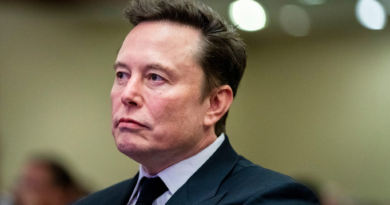AI's winners and losers have a clear precedent you've never thought about, Goldman strategy guru says: The canal boom of the 18th century
With Wall Street lauding artificial intelligence as a driver of the “fourth industrial revolution,” and pushing investors to take advantage of the “gold rush” as soon as possible, there’s been a veritable hype cycle for AI-linked tech stocks in recent years. AI leaders like Microsoft and Nvidia are soaring amid the enthusiasm, and earnings boost, but some experts still fear that the AI hype is overblown, if not an outright bubble.
With all this in mind, investors are surely wondering: Just how long can AI stocks’ run last?
To answer that question, Peter Oppenheimer, Goldman Sachs’ chief global equity strategist and head of macro research in Europe, looks to history, which offers plenty of lessons on how past technological advancements have helped, or tricked, investors.
Oppenheimer spoke with Fortune about his new book, Any Happy Returns, which details the rise of a number of groundbreaking technologies, and how investors have navigated the upheaval they’ve created. The discussion even included one under-the-radar, and somewhat unexpected, technological marvel: canals.
Now largely forgotten, canals revolutionized transportation, allowing for quick transport of goods to ports and creating tremendous profits to boot—at least initially.
The first canals in the U.K. were built in the mid-1700s to ferry heavy cargo, such as coal and iron ore, as well as fresh produce around the country. The new infrastructure shortened shipping times and its popularity allowed investors who financed canals to make strong returns. Their success drew in crowds of new investors, and by the 1790s, a bubble developed in canal stocks on the London Stock Exchange. As is typically the case, that bubble eventually burst, and canal stocks turned out to be a bad investment for many. But the canals themselves remained, helping to drive industrial output and productivity growth for years to come.
This rise and decline has a parallel in today’s AI boom, with two key lessons for investors.
Lesson 1: Networking effects take time—but maybe less time with AI
First, while canals were a revolution that enabled heavy cargo to be transported faster and more affordably than the horses and carts before them, their impact wasn’t felt right away. “Innovation that spurs change typically takes quite a long time to fully impact the real economy and boost productivity,” Oppenheimer said, arguing “networking effects” need to work their magic first.
“In other words, things like canal and steam technology were hugely transformative, but it wasn’t until you actually built enough steam engines and dug enough canals, and then built factories by the canals, and so on and so forth, that you really saw the impact coming through,” he explained.
Photo by Priestley & Sons Egremont/Hulton Archive/Getty Images
So for all the hype about AI’s ability to boost worker productivity and reduce costs for businesses, the reality is, change takes time after a technological revolution.
But there is some good news for AI investors hoping to see the technology used effectively as soon as possible. “I think with AI, the gap between the technology being developed and its real impact on the economy may be a lot shorter,” Oppenheimer said.
AI already sits on the back of existing technologies, like the internet, cloud computing, and smartphones, which means it can “probably be employed very quickly, and have quite a big impact quite rapidly on productivity,” he argued.
Like canals (and, later, the steam engine), AI has the potential to radically boost productivity. In a 1904 book titled The Canal System of England, Hubert Gordon Thompson detailed the cost savings and production increases that new canals brought to England during the 18th century. In the middle of the century, he noted, trade was “greatly hindered by the heavy expense and the lack of adequate means of conveying” products to ports. Canals solved that problem.
Take the route between Manchester and Liverpool as an example. When the Mersey and Irwell canals were created in 1724 and 1734, connecting the two cities, the cost of transporting goods between them plummeted by 70%. And once the larger and more direct Bridgewater canal was completed in 1761, Gordon Thompson wrote, transportation costs were cut in half again—all with “a better service was given than that provided by either of the forementioned routes.”
Gordon Thompson also put some facts behind the increase in overall trade due to the canals. In 1761, it “was estimated” that the total quantity of goods carried between Manchester and Liverpool was just 2,000 tons per year, with an average cost of 1 pound sterling per mile over the roughly 35-mile trip, he wrote. A century later, volume had increased by a factor of 5,000. “For 1890…it was estimated that the traffic was not less than 10,000,000 tons, and the cost of transit from 3/- to 8/- per ton for the whole distance,” Gordon Thompson noted.
English Heritage/Heritage Images/Getty Images
Lesson 2: The long-term winners might not be AI-specific companies
The second lesson Oppenheimer drew from the canal stock saga is that the companies that benefit the most in the long run after the rollout of revolutionary new technologies aren’t typically the ones investors have their eyes on in the short term.
He noted that people often get “excited” about the first-mover companies that they imagine profiting from a new technological innovation. These are the firms that are spending to commercialize the technology, or creating what some analysts have labeled the “picks and shovels” of the revolution. “But often, ultimately, they’re not the biggest winners,” Oppenheimer said. “The biggest winners are the people that can use the technologies to develop new products and services.”
Oppenheimer gave an example from the 1990s to prove the point. During that decade’s tech bubble, he said, excitement over the rise of the internet led investors to flock to telephone companies that were laying the actual “pipes,” or cables that would enable the internet to roll out to consumers.
“It was considered that these [telephone companies] would own a lot of the revenues from transporting data at very high speeds,” he explained.
But as it turned out, telephone companies “didn’t really end up benefiting” very much from the internet, he said. They spent too much money and time laying the groundwork for it, and, by the time they sold their bandwidth, prices had fallen considerably
“They didn’t really get a very good return on the capital,” Oppenheimer explained. “The people that really benefited from the internet were companies that could utilize the technology once it was in place, like platform companies or online retailers.”
So what does this mean for the average investor? Well, Microsoft, Nvidia, and other tech giants that are currently benefiting from the AI boom because they are laying the groundwork for the technology to function may not be the long-term winners. Instead, it could be companies that use AI to create new products and services.
But here’s the trick: no one really knows which companies will utilize AI the best over the long-term. And Oppenheimer didn’t offer any stock picks, instead arguing that investors should diversify their holdings. So if you’re trying to learn from history, when it comes to AI, it may make sense to proceed with caution. Picking winners and losers during periods of technological revolution has always been easier said than done—and the early winners are sometimes the wrong call.



